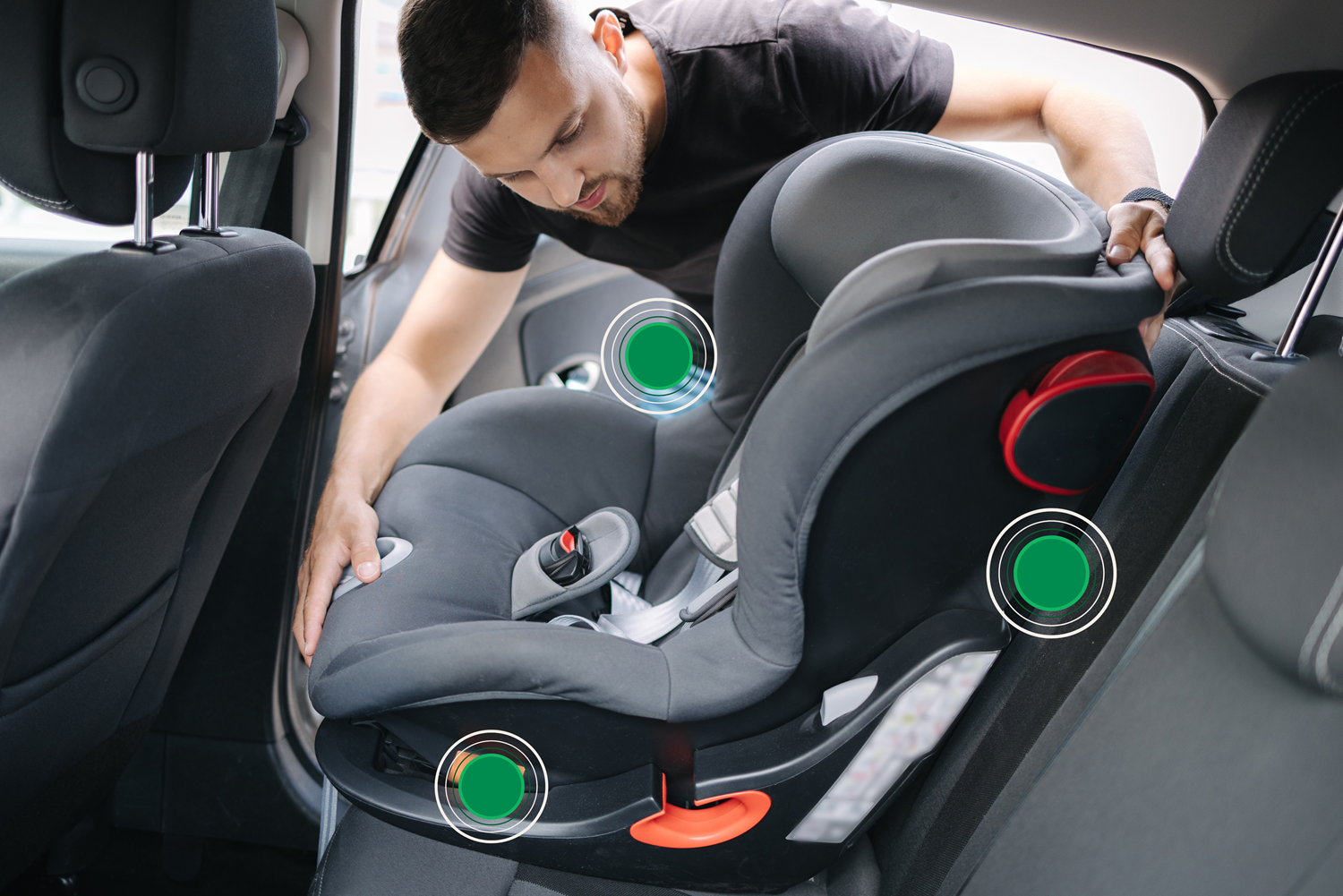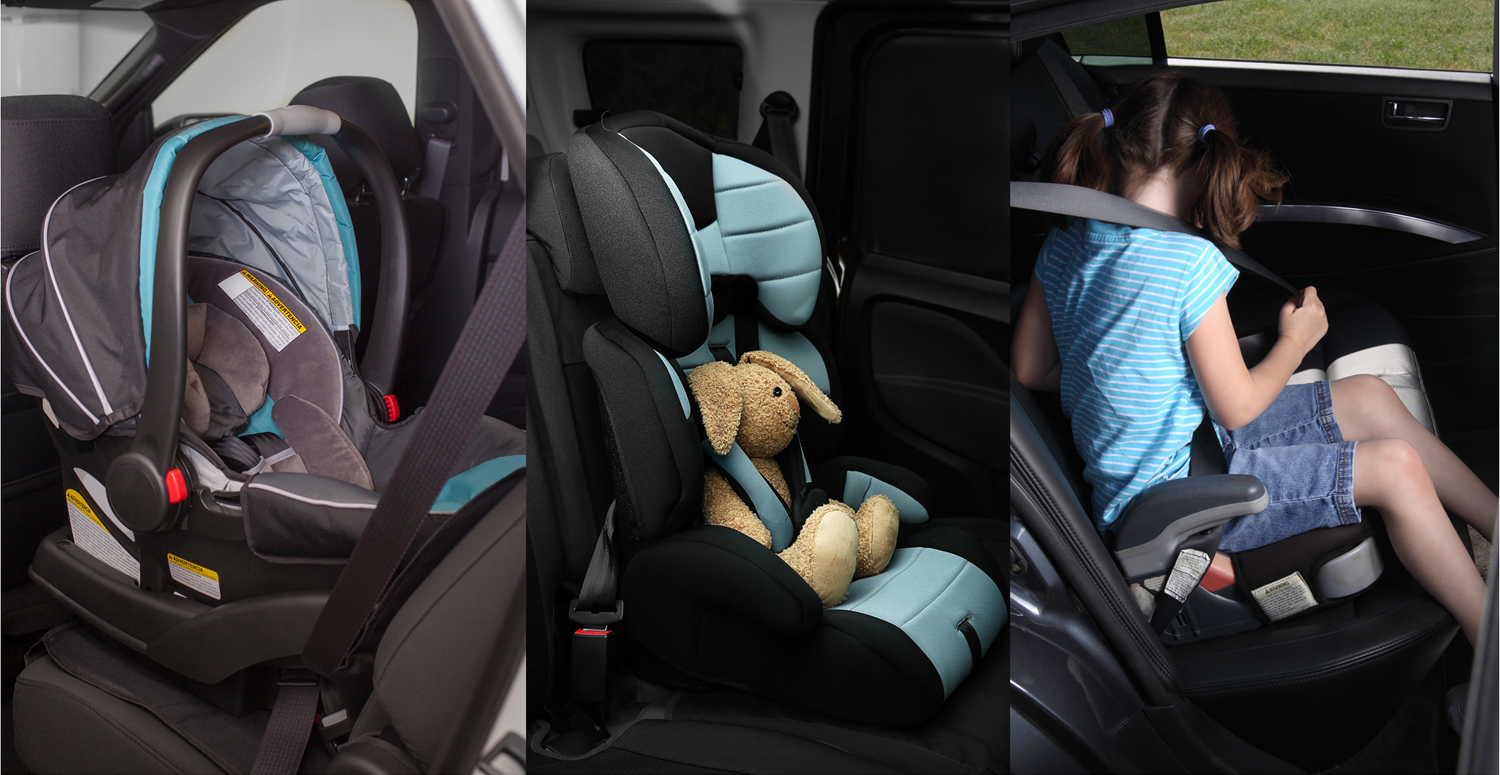
Choosing the Right Car Seat for Your Child's Age and Size
Choosing the right car seat is crucial for your child's safety and comfort while travelling. From infant car seats to booster seats, it's important to understand the difference between the various types and when to transition so your child is protected at every stage. As they grow and outgrow their car seats, consider donating them to the DEKRA Safe Child initiative. By donating your unused car seats to the nearest DEKRA branch, you help less fortunate families comply with South Africa's child restraint laws, ensuring more children are safe on the road. Click/tap here to find your closest DEKRA branch right now.
1. Types of Car Seats
Infant Car Seats
These are the first car seats your newborn will use, designed specifically to provide the best protection and comfort for your little one right from birth. Infant car seats are rear-facing, offering optimal support for your baby's fragile neck and spine. They come with a convenient carrier handle, making it easy to transport your baby from the car to your home without waking them up. As your baby grows, you'll need to switch to a different car seat, but for those first precious months, an infant car seat is the safest option for your bundle of joy.
Convertible Car Seats
Versatility is the name of the game with convertible car seats. These seats can be used as both rear-facing for infants and toddlers and forward-facing as your child grows. They are designed to accommodate your child from infancy through the preschool years, making them a cost-effective and long-term investment in your child's safety. While they may not be as portable as infant car seats, convertible car seats provide excellent protection and comfort for a wide age and size range.
Booster Seats
As your child moves beyond the toddler years, booster seats become essential for ensuring they are safely and comfortably positioned in the car. Booster seats are designed for older children who have outgrown their forward-facing car seats but are not yet tall enough to use the vehicle's seatbelts properly. They elevate your child, allowing the seatbelt to fit correctly over their shoulder and lap, which is important for effective restraint in case of an accident. Booster seats come in two main types:
- high-back boosters: offer additional head and neck support
- backless boosters: easy to transport and use in different vehicles

2. Selecting the Right Car Seat
Infants (0 to 12 months)
For your newborn, choosing the right car seat means opting for a rear-facing infant car seat. These seats provide essential support for your baby's head, neck, and spine. They are portable and perfect for keeping your little one safe and cosy during those first few months. While it might be tempting to use a forward-facing seat, rear-facing offers better protection for your child's head, neck and spine in case of a collision.
Tip: To monitor your baby, consider using a rear-view baby mirror that attaches to the back seat headrest. It will allow you to see your child while driving.
Toddlers (1 to 3 years)
For toddlers, a convertible car seat is ideal. It starts as rear-facing and can switch to forward-facing as your child grows. This seat offers long-term use and excellent protection during this active and curious stage.
Preschoolers (4 to 7 years)
Preschoolers need forward-facing car seats with a harness. These seats provide the necessary support and safety as your child becomes more independent. Ensure it fits securely and comfortably and accommodates their growing size.
School-Aged Children (8 to 12 years)
For older kids, use a booster seat. It ensures the vehicle's seatbelt fits properly over your child's shoulder and lap. This stage is crucial for transitioning safely to using the car's built-in seatbelts.
The importance of Using the Appropriate Car Seat
Impact on child safety
Proper car seats significantly reduce the risk of injury in a crash. Studies show that a correctly installed child safety seat can reduce the need for hospitalisation by 69% for children aged 0-4 years. In South Africa, regulations require all children under three years to be in a car seat, addressing a critical gap in child-passenger safety. Using the appropriate seat helps prevent ejection from the vehicle during an accident, which is a leading cause of serious injuries and fatalities.
Legal requirements and guidelines
In South Africa, the National Road Traffic Act mandates that all children under three years old must be strapped into an appropriate car seat. Children aged 3-14 years must use a child restraint or seatbelt. Additionally, car seats and child restraints must comply with the standard specification SABS 1340, ensuring they meet safety standards. Non-compliance can result in penalties and severe charges such as reckless driving or culpable homicide in the event of a crash.
Common misconceptions and mistakes
Many parents mistakenly believe that older children don't need booster seats or that using a seatbelt is enough for young children. Another common mistake is moving a child to a forward-facing seat too soon. Choosing the right car seat involves always following manufacturer guidelines and seeking professional help for installation if needed. It's also essential to ensure the car seat is properly secured and fits the child's size and weight correctly. When using second-hand car seats without knowing their history, always check for wear, damage, or previous involvement in accidents.
4. General Car Seat Safety Tips
Correct Installation Techniques and Secure Fit
Installing a car seat correctly is a non-negotiable. Always follow the manufacturer's instructions carefully. Use either the vehicle's seatbelt or the LATCH system to secure the seat tightly. You should not be able to move the seat more than an inch side-to-side or front-to-back when it's properly installed. Make sure the harness is snug and positioned correctly. The harness straps should be at or below your child's shoulders for rear-facing seats, and at or above the shoulders for forward-facing seats.
Regular Maintenance and Checks
Regularly inspect your child's car seat for any signs of wear and tear. Check the straps, buckles, and plastic parts for damage. Make sure the seat is still securely installed and hasn't loosened over time. Clean the car seat according to the manufacturer's instructions, but avoid harsh chemicals that could weaken the materials.
Transitioning Between Car-Seat Stages
Transitioning between car-seat stages is based on your child's age, weight, and height. Keep your child rear-facing as long as possible, at least until age two or until they reach the maximum height or weight for their seat. Move to a forward-facing seat with a harness, then to a booster seat when they outgrow it. Each stage provides important protection suited to your child's development.
Why rear-facing car seats go in the back
Choosing the right car seat includes making sure that a rear-facing car seat is always placed in the back of your car. This is the safest location, away from active airbags that could cause serious injury in the event of an accident. Ensure the car seat is securely installed according to the manufacturer's instructions, and double-check that it's properly reclined to support your baby's head and neck. Rear-facing seats provide the best protection for your child's head, neck, and spine should there be a crash, distributing the impact forces more evenly.
5. DEKRA Safe Child Initiative: Help Us Keep All Children Safe
As parents, we always strive to provide the best for our children, however, not all families can afford the essential car seat that protects our little ones on the roads. That's where the DEKRA Safe Child initiative comes in.
What is the DEKRA Safe Child Initiative?
This heartfelt project is aimed at providing safe, usable car seats to families who cannot afford them. DEKRA has teamed up with Wheel Well to facilitate this important cause. By donating your previously owned car seat, you're helping ensure that more children can be safely secured while travelling.
How Can You Help?
When your children outgrow their car seats, consider donating them to the DEKRA Safe Child initiative. Your donation can make a significant difference in the lives of less fortunate families and you'll have one less thing taking up unnecessary space at home. Here's how you can help.
- Donate Your Car Seat: If you have a car seat that your child no longer needs and is still in good condition, bring it to any of the DEKRA branches nationwide.
- Spread the Word: Tell other parents about DEKRA Safe Child. The more people who know about it, the more car seats we can collect and redistribute.
- Partner with Us: If you or your organisation share our vision for road safety, consider partnering with DEKRA Safe Child to expand our reach and impact.
Why Your Donation Matters
Every year, around 186 000 children under 18 die from road traffic crashes, with developing countries like South Africa having significantly higher rates. By donating your unused car seat, you are directly contributing to reducing these tragic numbers. Your car seat could be the difference between life and death for a child on the road.
Click/tap here to contact DEKRA for more information.
Choosing the right car seat is an essential step in safeguarding your child on the road. As your little one grows and transitions to the next stage, remember that your outgrown car seat can still make a huge impact in somebody else's life. By donating your unused car seat at the nearest DEKRA branch, you help other families keep their children safe and comply with South Africa's child restraint laws. Your generosity ensures that every child, regardless of their family's financial situation, can travel securely. Visit your closest DEKRA branch today and donate a car seat to the DEKRA Safe Child initiative. Together, we can make a difference.